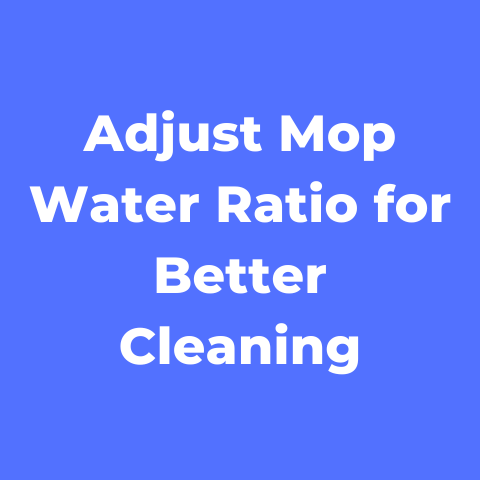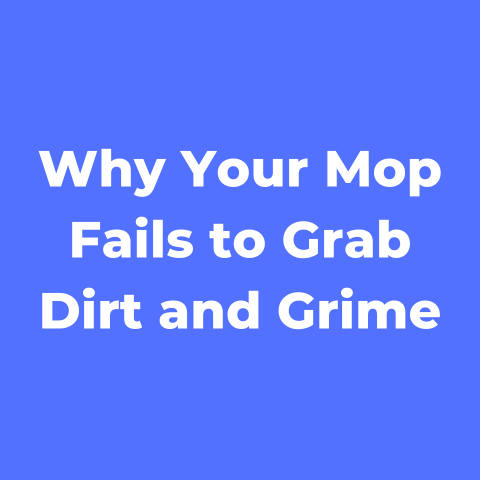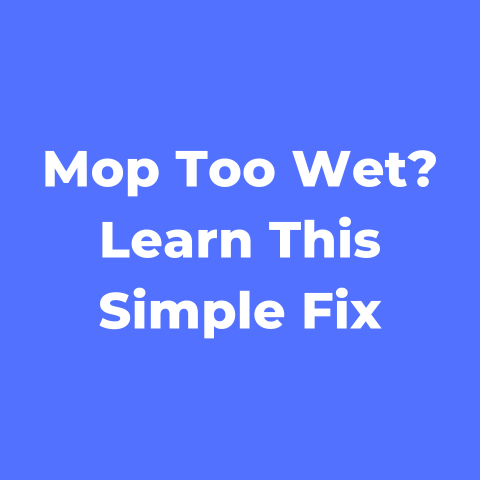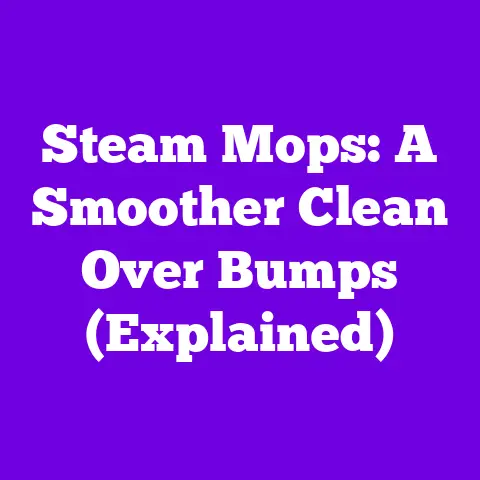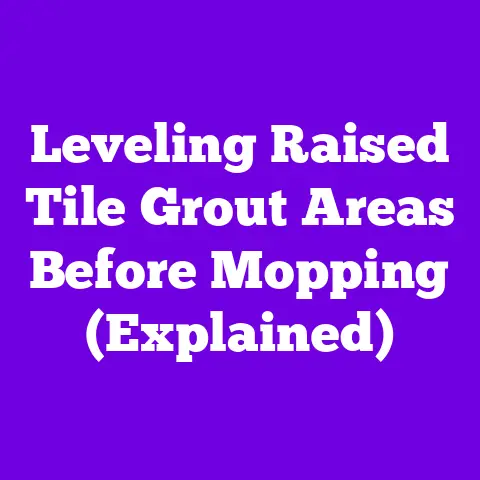Mop Head Worn Out? Time to Replace It
A mop is one of the handiest cleaning tools for hard floors. Whether you’re cleaning up an accident or deep cleaning the floors, a good mop can make the job much easier and faster. However, over time and repeated use, mop heads become less effective as dirt, grime, and liquids break down the fibers and materials.
Replacing a worn out mop head is essential to keep your floors as clean as possible. Not doing so means you’ll likely be spreading around dirt instead of picking it up. Don’t wait until your mop is completely falling apart – early signs like leaving streaks, not absorbing well, and foul odors are clear indicators a fresh mop head is needed.
In this comprehensive guide, we’ll cover everything you need to know about when and how to replace your mop head. You’ll learn to spot the signs of wear and find instructions for removing the old mop head and installing new replacement heads. We’ve also included some handy tips and tricks to extend the life of your mop. Equipped with this knowledge, you’ll be able to keep those floors shining bright.
When Is It Time For a New Mop Head?
It’s not always easy to know when it’s time to replace your mop head. Here are some key signs that indicate your mop is due for a fresh set of fibers:
Streaky floors after mopping
- If your floors have visible streaks or dirty footprints after you thought you cleaned them, your mop likely isn’t picking up dirt effectively anymore. This usually means the fibers are clogged or worn down past their cleaning abilities.
Musty or unpleasant odors coming from the mop fibers
- Bacteria and mildew buildup within a dirty mop head can create unpleasant odors over time. An overly stinky mop is not only unhygienic but signals it’s time for an upgrade.
The mop leaves excess lint and fibers behind
- Natural materials like cotton yarn and microfiber cloth break down slowly with repeated use. If your mop head starts leaving bits of itself behind on the floor, it’s shedding – another sign to toss it out.
Poor water absorption
- Your mop head should easily absorb water (and liquids spilled on floors). If you find it’s not soaking up water well and leaving excess on the floor, the fibers have filled up with debris and dirt reducing absorption capacity. Get a fresh head that can quench its thirst fully.
You regularly need to wring it out forcefully
- Excessive wringing and twisting tries to force out embedded grime but is quite stressful on the fibers. If you regularly find yourself aggressively squeezing liquid from an old dirty mop, don’t fight it – just replace it.
The head shape is deformed
- Cleaning forces, long-term storage, and regular machine washing can deform and flatten mop heads over time. When the head shape appears squished, makeup application sponge-like, or otherwise very different from its original shape, toss it. Proper cleaning requires full head contact with the floor.
How to Remove and Replace a Mop Head
Once you’ve determined your mop head needs replacing, carefully follow these step-by-step instructions to remove it and install a fresh new head. Make sure to select replacement heads specifically compatible with your mop model.
Things You’ll Need:
- Compatible new mop head
- Phillips or flathead screwdriver (for mops with screw-on heads)
- Gloves
Step 1: Remove the Current Head
Based on your mop style, there are a few options for cleanly removing an old mop head:
Clamp-style mop heads:
Simply undo the clamp and pull the mop head free from the bottom. Some twisting or rocking motions help slide it off.
Screw-on mop heads:
Locate the flathead, Phillips, Allen, or star-shaped screw at the mop bottoms. Have your compatible screwdriver ready to loosen and remove the screw, freeing the head.
Quick-change mop heads:
Find the release tab, button, or latch mechanism designed for easy mop head changes. Press, flip, or slide this part to disengage the current pad.
Fixed mop heads:
Cut the stitching at the top edges of the mop using wire cutters or sharp scissors. Trim any stubborn connecting threads once the bulk of stitches are severed.
Step 2: Dispose of Soiled Head Properly
Discard your worn out mop pad with regular trash destined for a landfill. For especially dirty, mildewy pads caked in grime and bacteria, first seal in a plastic bag to contain odors and germs.
Check if your cleaning mop heads are made from recycled cotton, microfiber or other fabrics and can go in a compost bin instead of standard garbage disposal.
Step 3: Prep Floor Attachment Site
Inspect where the mop head attaches for any stuck on debris, residual adhesive, or rust buildup. Use gloves and wipe away such deposits with an all-purpose cleaner and rag.
Give the area a rinse, dry thoroughly, and cover any scratches with touch up paint if needed to prevent future rust expansion. Proper prep ensures optimal grip strength for the new replacement pad.
Step 4: Secure New Mop Head
Based on your mop variety, affix the fresh mop head tightly using the suitable attachment steps:
Clamp-style:
Slide clean bottom clamp parts into interior pocket folds in the mop head edges. Close clamp carefully but firmly around the gathered fabric.
Screw-on:
With screwdriver in hand, orient new pad correctly at the base. Insert and tighten retaining screw securely through center opening.
Quick-change:
Align notches or inserts on pad underside with mechanism parts per individual mop specs. Snap, press, or slide tab back into locked position.
Fixed head:
Overlap raw pad edges at the mop top seam. Use thick upholstery thread and needle to sew a durable straight stitch down both sides. Knot thread ends tightly.
Step 5: Test New Mop Head
Once secured, grasp mop handle with both hands and apply moderate downward pressure on the fresh head, checking:
- Overall durability and proper installation
- Fabric tension, shape conformity and floor contact
- Loose parts, slipping or unexpected detachment
If all appears and feels normal, do a quick test run on a small floor area – your new super absorbent mop is ready to shine!
Tips to Make Your Mop Head Last
With proper care and maintenance, you can extend the usable lifespan of your mop heads, saving money and hassle on frequent changes. Here are our best tips:
Rinse thoroughly after each use
Diluted cleaning solutions and water attract dirt less than grimy chemical and dirt buildup. Give mop heads a good rinse until water runs clear. Wring thoroughly to prevent mildew smells.
Air dry mop heads completely
Moist, bunched up mop heads breed bacteria and mold rapidly. Unclamp and spread out pad strands to air dry fully before compact storage.
Machine wash removable mop pads
When warranted for your mop, remove pad and machine wash alone on cold gentle cycle. This restores deep cleanliness between periodic replacements.
Use steam cleaners
Heating grimy buildup via steam loosens and sanitizes stuck-on messes in cotton and microfiber strands very effectively.
Spot scrub with brush and cleaner
For isolated stains or caked mud on pad sections, manual scrubbing keeps the entire head from hitting the trash prematurely.
Avoid overly hot water
While warm water cuts grease well, boiling temps risk melting glue, damaging fabric backings, and weakening mop fibers.
Add cleaning boosters to mop bucket
Sanitizing bleaches, hydrogen peroxides, and vinegar help dissolve sticky buildup that reduces cleaning abilities over time.
Replace TOUGH mopping jobs
Save older mop heads for light dusting and drying – not heavy scrubbing of concrete stains for example. Match toughness appropriately.
The Bottom Line
Does your mop leave unwelcome streaks or odors behind? Do the microfiber strands shed excessively and soak up spills poorly? Trust the signs that it’s high time to replace that worn out mop head. With our easy step-by-step removal and installation instructions, you’ll restore cleaning power safely and affordably.
Remember to dispose of soiled pads properly and incorporate our handy maintenance tips to maximize the working life of mop heads. That way, you can move ahead with washing floors effectively using our top tips. Durable surfaces and a gleaming shine become effortless again in no time.

